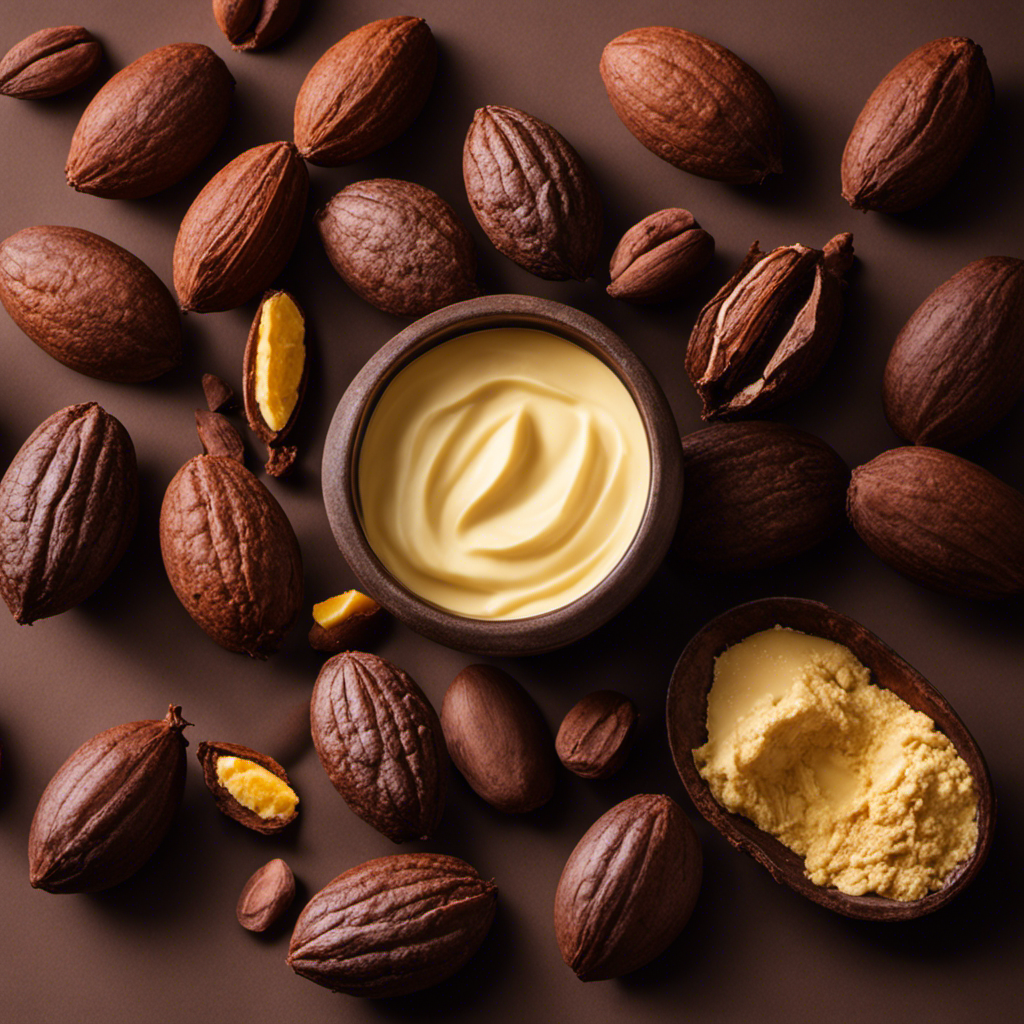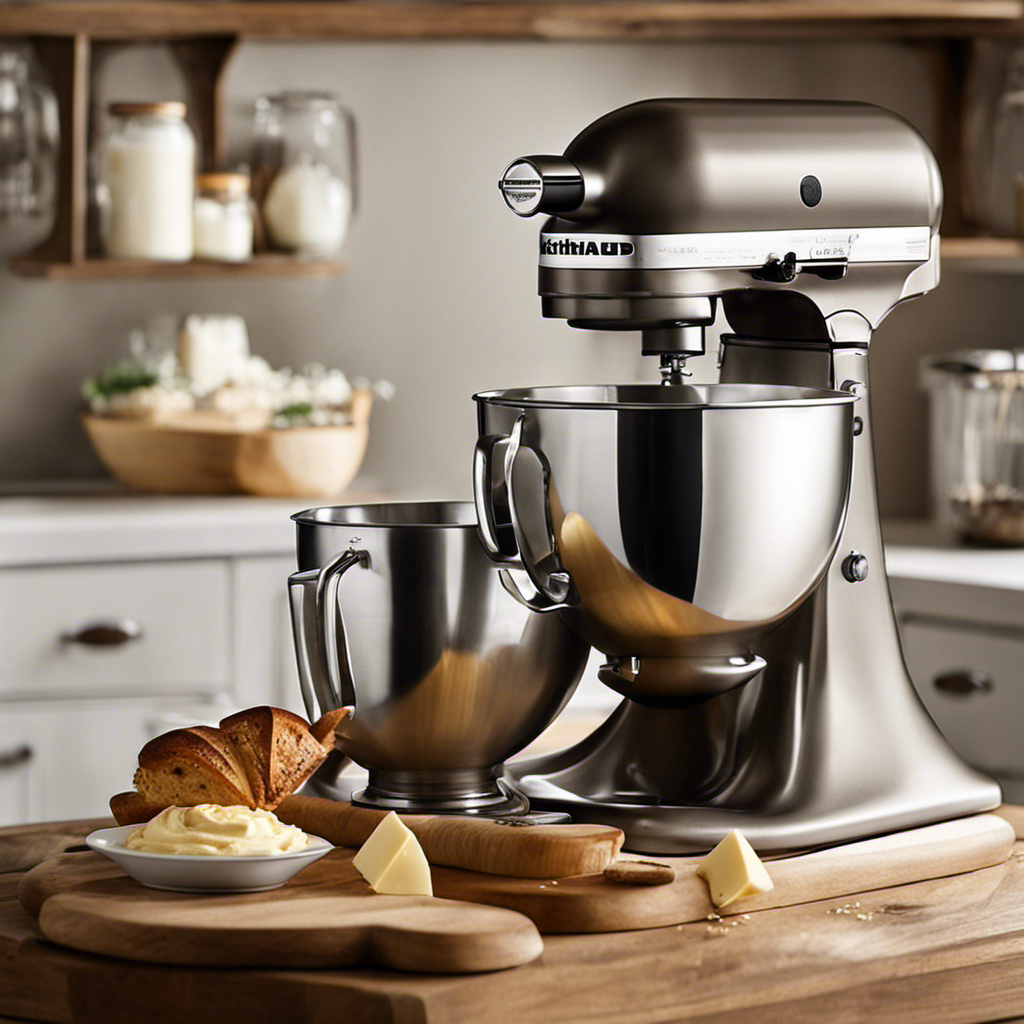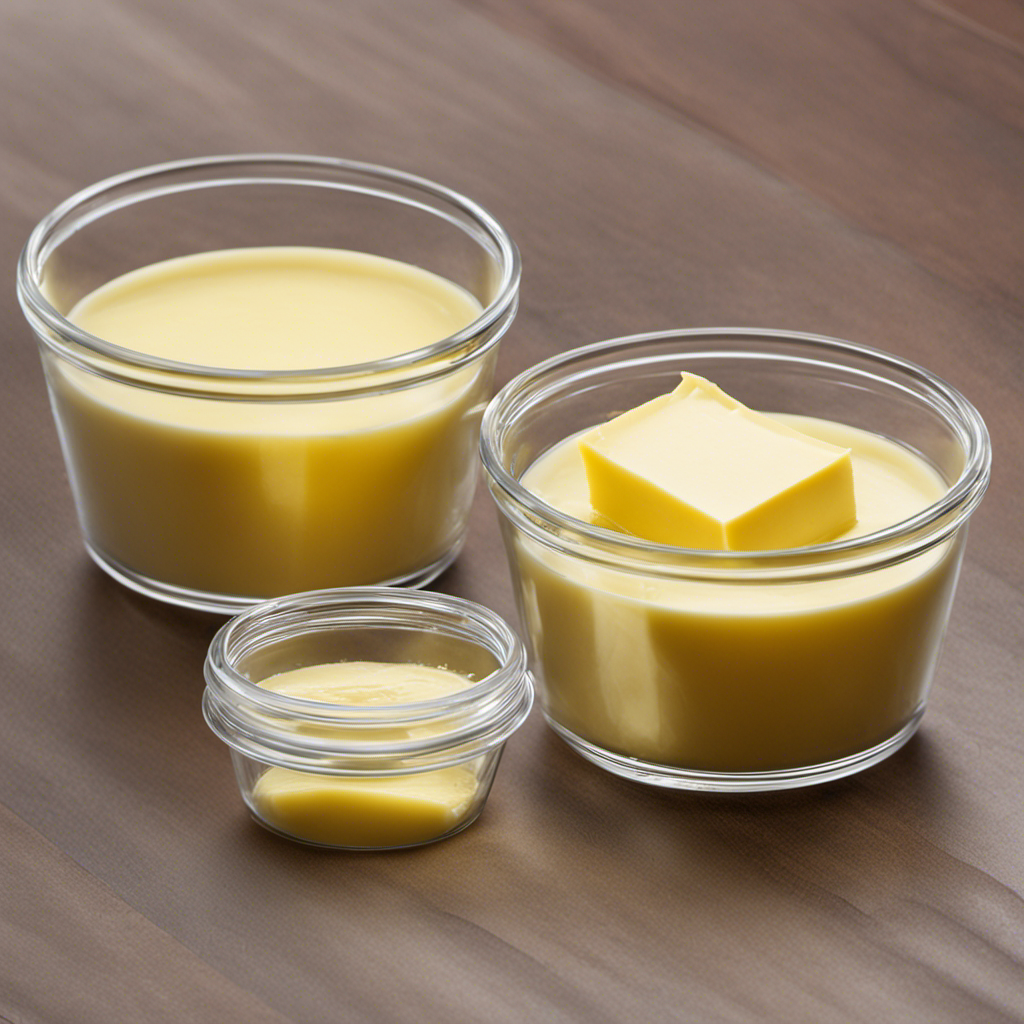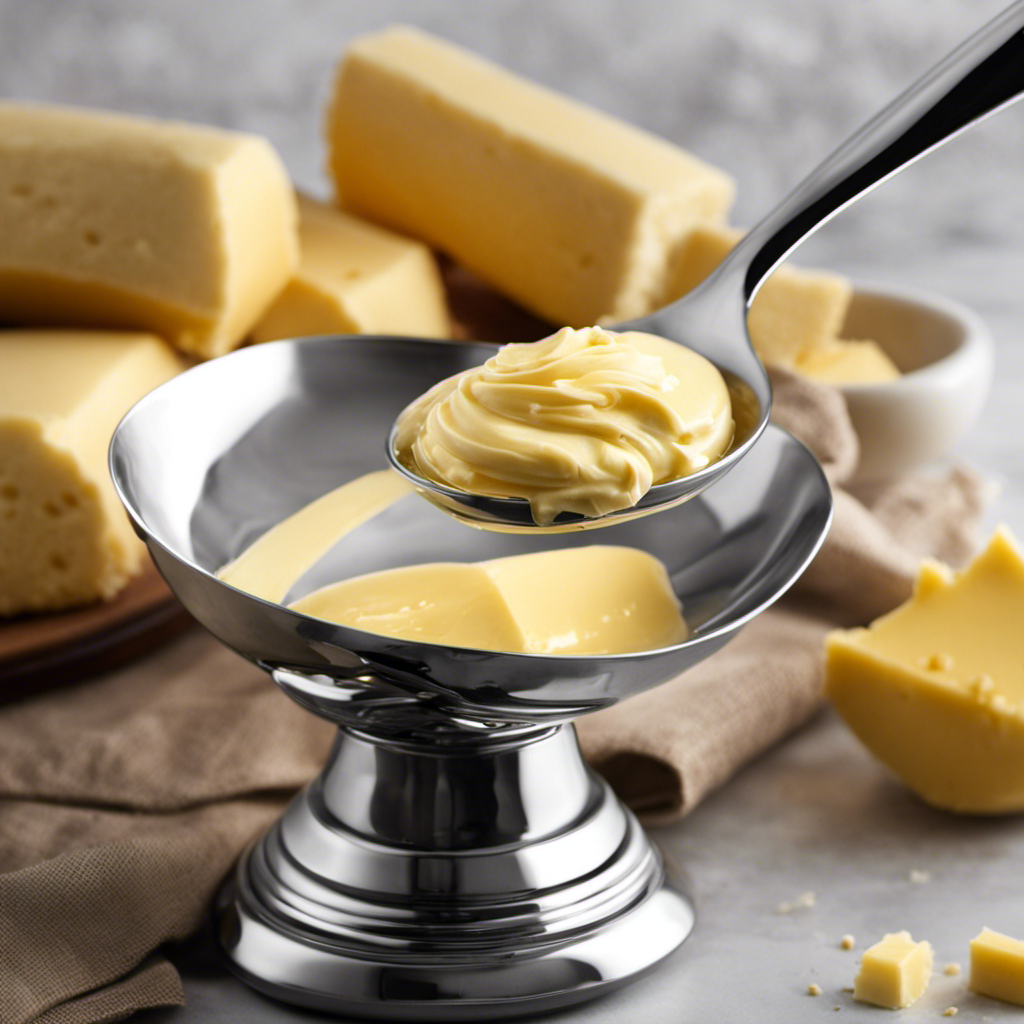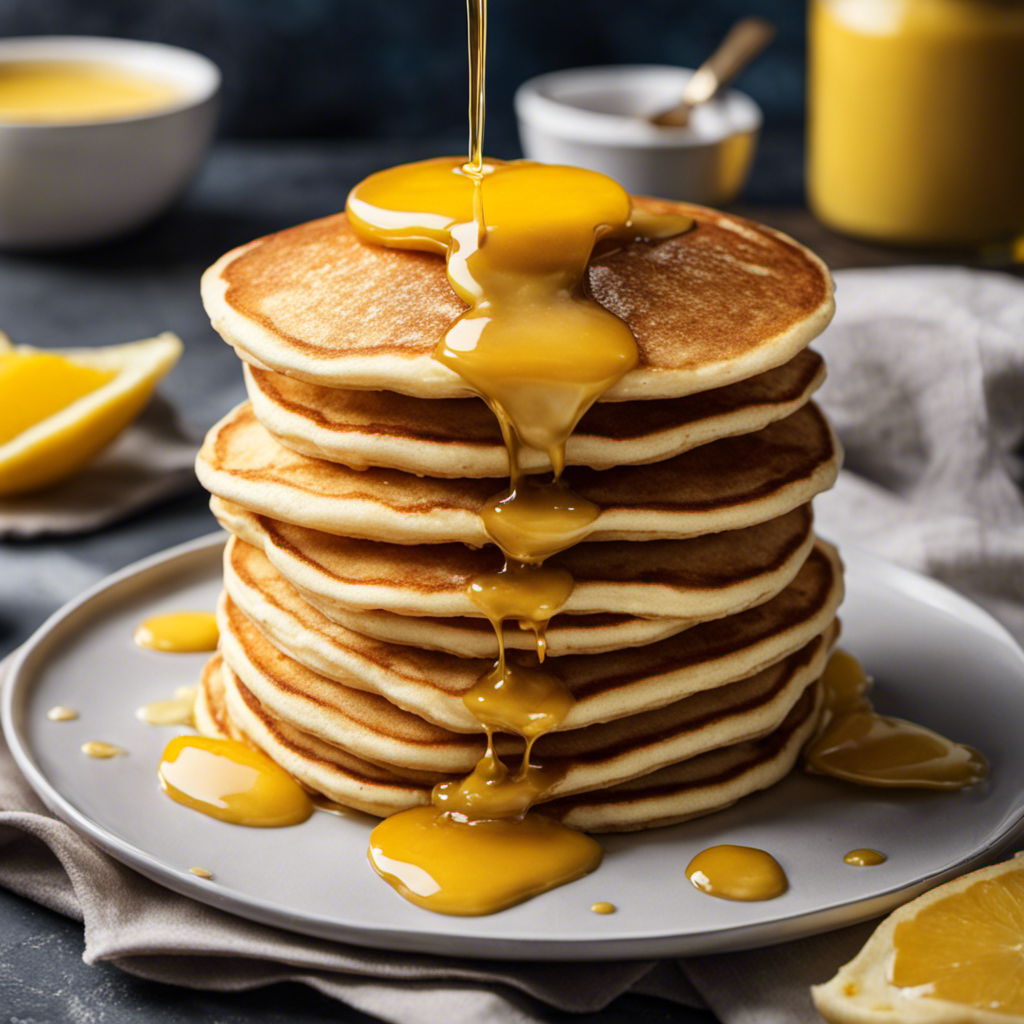I have always had difficulty with dry skin, especially in the winter months. However, I recently found a solution that has made a big difference: homemade cocoa butter.
Not only is it super moisturizing, but it’s also all-natural and free from any harmful chemicals.
In this article, I’ll show you step-by-step how to make your own cocoa butter from scratch, using simple ingredients you probably already have in your kitchen.
Say goodbye to dry, flaky skin and hello to a radiant, hydrated complexion.
Let’s get started!
Key Takeaways
- Cocoa butter provides intense hydration and improves skin elasticity.
- It contains fatty acids that lock in moisture and antioxidants that protect against environmental damage.
- Making cocoa butter from scratch involves roasting cocoa beans, grinding them into a fine powder, melting the cocoa butter, and straining the mixture.
- To store and preserve homemade cocoa butter, it should be kept in an airtight container in a cool, dark place, and utensils should be clean to prevent contamination.
The Benefits of Cocoa Butter for Skin
I love using cocoa butter for my skin because it provides numerous benefits like intense hydration and improved elasticity.
Cocoa butter is a natural moisturizer that deeply nourishes the skin, making it softer and smoother. It contains a high concentration of fatty acids, which creates a protective barrier on the skin, locking in moisture and preventing water loss. This makes it especially beneficial for dry and dehydrated skin.
In addition to its moisturizing properties, cocoa butter also helps improve skin elasticity, making it more supple and youthful-looking. It’s rich in antioxidants that fight free radicals and protect the skin from environmental damage.
Incorporating cocoa butter into your skincare routine can be as simple as applying it directly to the skin or using DIY cocoa butter recipes for glowing skin.
Choosing the Right Ingredients for Homemade Cocoa Butter
Using natural and high-quality ingredients is essential when creating your own homemade cocoa butter for skincare. Here are four reasons why choosing natural ingredients is crucial for maximizing the benefits of cocoa butter for hair:
-
Superior nourishment: Natural ingredients, such as organic cocoa beans, provide your hair with essential nutrients like vitamins, minerals, and antioxidants. These nourishing elements promote healthy hair growth and repair damaged strands.
-
Chemical-free solution: By using natural ingredients, you avoid exposing your hair to harmful chemicals commonly found in commercial hair care products. This reduces the risk of scalp irritation, hair breakage, and other adverse effects.
-
Deep hydration: Natural cocoa butter is a potent moisturizer that deeply hydrates your hair, leaving it soft, shiny, and manageable. It helps combat dryness, frizz, and split ends, promoting overall hair health.
-
Sustainable and ethical choice: Opting for natural ingredients supports sustainable and ethical practices. You can ensure that the ingredients used are responsibly sourced, cruelty-free, and eco-friendly.
Step-By-Step Guide: Making Cocoa Butter From Scratch
To start the process, gather all the necessary ingredients and equipment for making homemade cocoa butter. You’ll need cocoa beans, a grinder or food processor, a cheesecloth or fine mesh strainer, and a double boiler or a heatproof bowl and saucepan.
Begin by roasting the cocoa beans in a preheated oven at 250°F for about 20 minutes. Let them cool, then remove the shells and grind the beans into a fine powder.
Place the cocoa powder in a double boiler or a heatproof bowl over a saucepan of simmering water. Stir occasionally until the cocoa butter melts and separates from the cocoa solids.
Strain the mixture through a cheesecloth or fine mesh strainer to remove any remaining solids. Once cooled, your homemade cocoa butter is ready to use. It can be used as a moisturizer, lip balm, or in various beauty products.
However, it’s important to note that some people may experience potential side effects such as allergic reactions or skin irritation. Always conduct a patch test before using it on a larger area of your skin.
Essential Tips for Storing and Preserving Homemade Cocoa Butter
One important tip for storing and preserving homemade cocoa butter is to keep it in an airtight container to prevent oxidation and maintain its quality.
Here are some additional tips to help you store your homemade cocoa butter effectively:
-
Store in a cool, dark place: Heat and sunlight can degrade the quality of cocoa butter, so it’s crucial to keep it in a cool and dark environment.
-
Avoid moisture: Moisture can cause cocoa butter to spoil and become rancid. Make sure the container is completely dry before storing the cocoa butter.
-
Use clean utensils: When using cocoa butter, always use clean utensils to prevent contamination, which can reduce its shelf life.
-
Check for signs of spoilage: Over time, cocoa butter may develop an off smell or change in texture, indicating spoilage. If this occurs, it’s best to discard it.
Creative Ways to Use Cocoa Butter in Your Skincare Routine
I love incorporating cocoa butter into my skincare routine because it moisturizes and nourishes my skin, leaving it feeling soft and supple. But did you know that cocoa butter can also be used in DIY haircare products and bath and body treats?
When it comes to haircare, cocoa butter can be melted down and mixed with other natural oils to create a deep conditioning treatment. This helps to moisturize the hair, reduce frizz, and add shine.
For bath and body treats, you can make your own cocoa butter infused body scrubs, lip balms, and lotions. These treats not only smell amazing but also provide intense hydration and leave your skin feeling smooth and refreshed.
Frequently Asked Questions
Is Cocoa Butter Suitable for All Skin Types?
Cocoa butter is suitable for all skin types. It provides numerous benefits, such as moisturizing and nourishing the skin. However, if you’re looking for alternatives, shea butter and coconut oil are great options.
Can I Use Cocoa Powder Instead of Cocoa Butter for Homemade Skincare Products?
I wouldn’t recommend using cocoa powder as a substitute for cocoa butter in homemade skincare products. While both come from cocoa beans, cocoa powder lacks the same moisturizing and emollient properties as cocoa butter. Consider alternative skincare ingredients instead.
How Long Does It Take for Cocoa Butter to Solidify After Making It From Scratch?
After making cocoa butter from scratch, it takes around 1-2 hours for it to solidify. Factors that affect solidification include temperature, stirring, and the presence of any additional ingredients. The melting point of cocoa butter is around 34-38°C.
Can I Mix Cocoa Butter With Other Oils to Enhance Its Benefits?
Yes, you can mix cocoa butter with essential oils to enhance its benefits. When combined, cocoa butter acts as a natural moisturizer, while essential oils provide additional nourishment and aroma for your skin.
Are There Any Potential Side Effects of Using Cocoa Butter on the Skin?
I personally haven’t experienced any potential allergic reactions from using cocoa butter on my skin. It’s important to follow the recommended usage and dosage to avoid any adverse effects.
Conclusion
In conclusion, making cocoa butter for your skin at home is a simple and rewarding process. By carefully selecting the right ingredients and following the step-by-step guide, you can create a high-quality product that offers numerous benefits for your skin.
While some might argue that purchasing store-bought cocoa butter is more convenient, creating your own allows you to have complete control over the ingredients and ensures a fresh and natural product.
So why not give it a try and experience the wonders of homemade cocoa butter for yourself?
